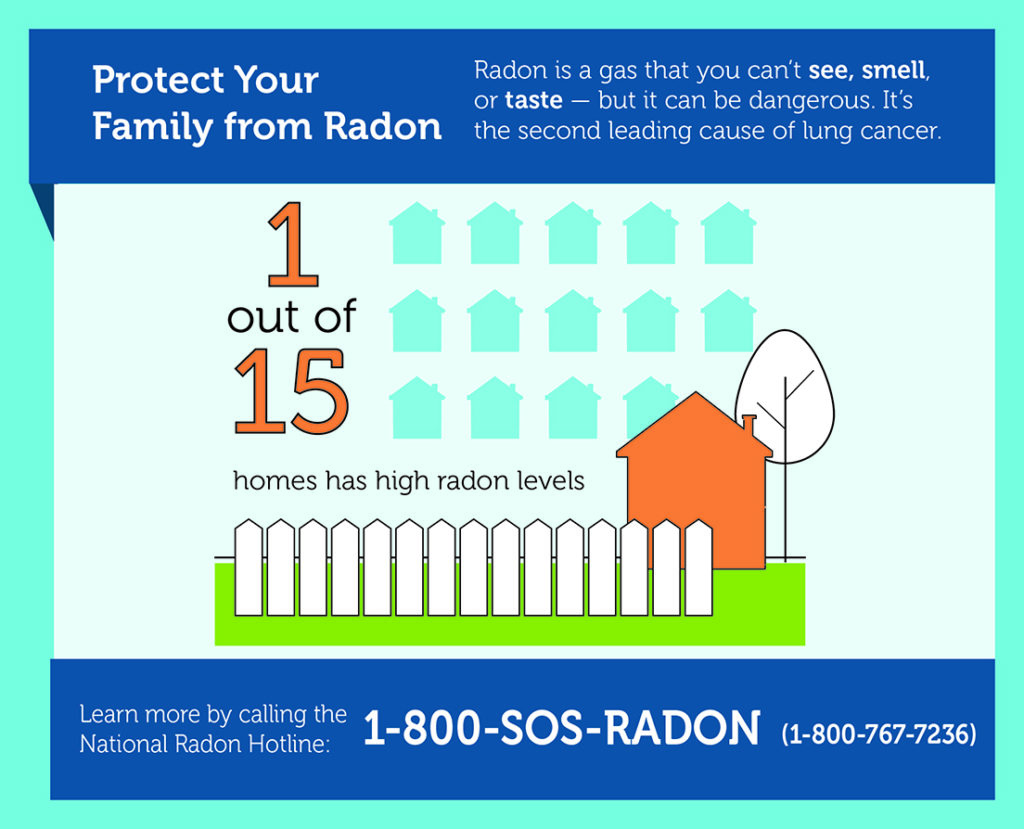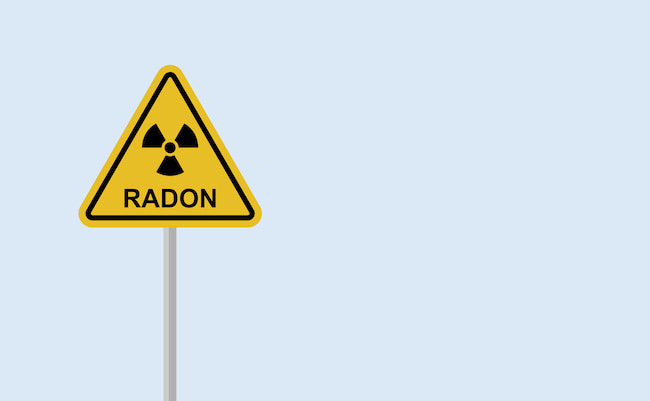According to the Environmental Protection Agency, radon is the leading cause of lung cancer among non-smokers. That’s especially concerning since as many as 1 in 15 homes in the US have high levels of radon.
Radon is a radioactive gas that comes from the natural decay of uranium in rocks and soil. It escapes from the ground and moves up into buildings (such as homes, schools, and workplaces) through cracks and holes in the foundation. Buildup of the gas is deadly and since it can’t be detected by sight, smell, or taste, radon problems usually go unnoticed.
The good news? Radon exposure is preventable! Home radon tests are simple and inexpensive — and one could save your life.
Who is at risk?
In short, everyone. Radon is present everywhere in the United States, but levels of the gas differ from state to state. Even people who live in “radon-resistant” homes should test their homes on a regular basis.
How to protect your home from radon
If you rent or own a home already, get it tested. It’s never too late to protect yourself! In fact, levels typically worsen over time and the risk of lung cancer increases with increasing radon levels and exposure.
If you’re looking to purchase a home, have it tested before moving in. Many states require sellers to disclose known radon issues when selling a home, but if they are unaware, they will not report an issue. That makes it your responsibility to test prior to purchasing the home or building.

Radon test kits can be found online or in home improvement stores. You can also hire a professional to test radon levels in your home. Qualified contractors can be found through state radon offices, which are listed on the EPA website here.
If you are using a do-it-yourself test, the EPA recommends using a short-term kit first. If the test result is 4.0 pCi/L or higher, do a follow-up test with either a long-term or another short-term kit to be sure. If the result is still high, you should take steps to fix the problem beginning with contacting a qualified contractor.
A variety of methods can be used to reduce radon levels in your home, such as sealing cracks in floors and walls or increasing ventilation using pipes and fans. A qualified contractor skilled in radon reduction is recommended by the EPA and the method(s) used depends on the type of foundation your home has. Learn more in the EPA’s Guide to Radon Reduction.
What to do if you have been exposed to radon
No medical tests are widely available to test whether or not you have been exposed to radon; the only way to know is by testing the environment. If you suspect that you have been exposed and you smoke, the first step is to quit smoking. The combination of smoking and radon exposure increases your chances of developing lung cancer than either one alone.
Next, if you think you have been exposed to elevated radon levels over a long period of time, talk to your doctor. He or she may recommend a low-dose CT scan to check for possible signs of lung cancer.
Even if you aren’t sure if you have been exposed to radon, talk with your doctor if you experience:
- A new or worsening cough that doesn’t go away
- Coughed-up blood
- Chest pain or tightness that worsens when breathing, coughing or laughing
- Severe or recurrent shortness of breath
- Hoarseness or wheezing
- Trouble breathing
Dr. Stacie Gilmore is a board-certified family medicine physician at Erlanger Primary Care in Murphy, NC, providing patients of all ages with comprehensive primary care services, including Women’s Health.
Concerned about your risk for lung cancer? Talk to your doctor. If you don’t have a doctor, find one here.







